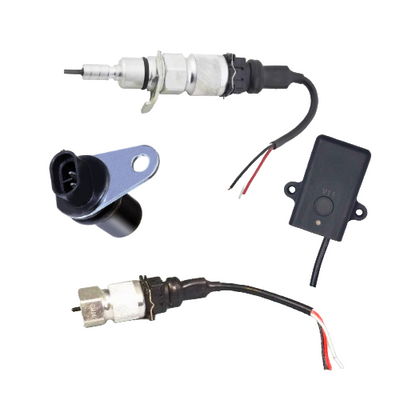USING SPEED SENDERS ON VARIOUS TRANSMISSIONS
NVU TECH DEPT. on 14th Mar 2025
Installing and setting up a speed sender is relatively easy, and the wiring is a piece of cake! The hard part is figuring out which setup you have, this post will help with that. Scroll to the section that pertains to your transmission style and read on.
GM/CHRYSLER CABLE REPLACEMENT STYLE 99001-04
These setups are for vehicles that have a mechanical cable driving your speedometer. These transmissions have an integrated gear that is part of the housing. The tooth count of the gear is not important as the speedometer will be calibrated to your specific vehicle.
APPLICATIONS:
Works on all cable-style GM/Chrysler transmissions, these are generally 7/8-18 thread with a .104" drive tang.
TH350
TH400
TH200 -Some have an integrated speed sender, see section below
TH400 -Some have an integrated speed sender, see section below
Borg Warner
727
Installation is super easy, simply remove your original cable and you will have this:
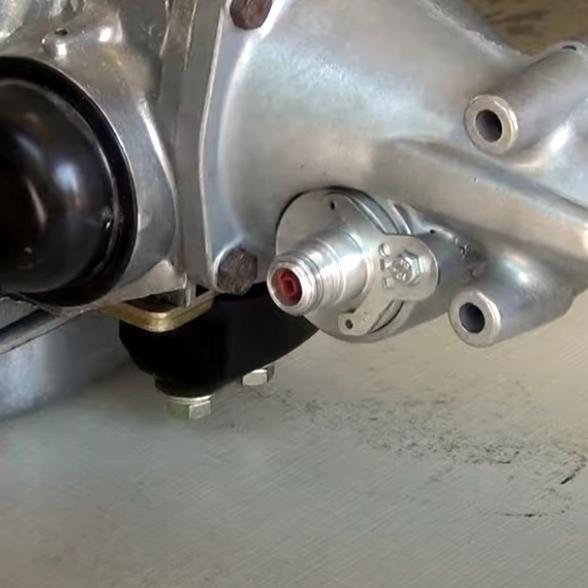
Then align the square drive with the gear and screw on snug. The sender has a rubber seal so a good snug fit is all you need.
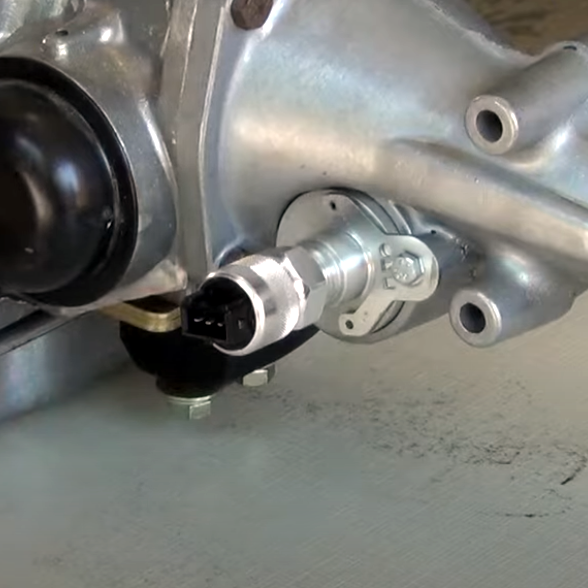
Wire up as the instructions show:
RED: 12V Switched power (same as your gauges)
BLACK: Ground
WHITE: Signal to speedometer, ORANGE wire on the 12-pin harness.
Calibration is easy, we have a simple video here:
FORD/TREMEC SPEED SENDER 99006-04
APPLICATIONS:
- 1968–1981 FMX—A hybrid of the FX and MX
- 1964–1981 C4
- Most small block V8 powered cars of the 1960s and 1970s in the North American market
- 1966–1996 C61974–1989 C3—Light-duty, smaller than the C4
- Most big-block V8 powered cars/trucks of the 1960s and 1970s in the North American market, All Fseries trucks without O/D, 80 thru 96 (97 For F250HD, F350, and F-Superduty models)
- 1982–1986 C5—Improved C4, with a lock-up converter
- 1985–1994 A4LD—C3 with overdrive
- 1989–1998 E4OD—C6 with overdrive
Tremec Aftermarket
Any transmission that uses a Ford style cable
These setups are for vehicles that have a mechanical cable driving your speedometer. A gear is required to spin the speed sender once inserted (not included). This is usually still on the end of your old cable, you can re-use it, no problem. The tooth count of the gear is not important as the speedometer will be calibrated to your specific vehicle. Don't forget the clip that holds the gear on!
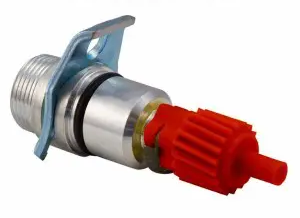
Tremec transmissions: This setup has 2 configurations available. The first one is an OE-style 2-wire speed sender. This generally has a very weak signal and on occasions its difficult to get a good, consistent reading. The second option is to use the mechanical drive port and install our 99006-04 speed sender and be done with it. You can also us our 99009-04 GPS speed sender. We have a good video on the subject right here:
Remove the old cable from the transmission by removing the bolt that clamps the hold down in. The cable should pull out. It might be a little stubborn if its been in there for 30-40 years!
Add the gear back on and install in the transmission. It may be a little tight as the sealing ring is needed to ensure a leak-free fit. A little lube helps.
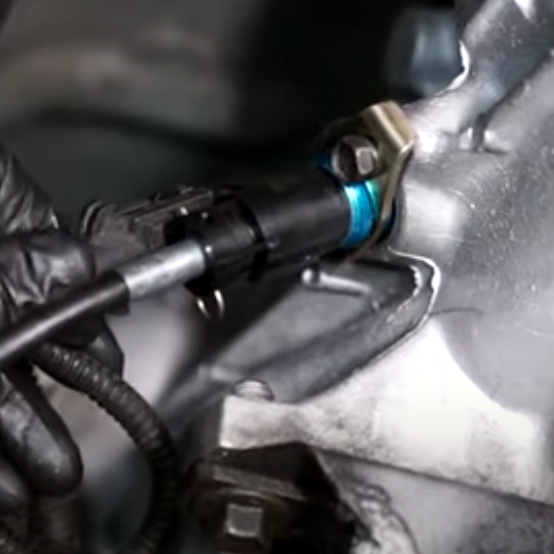
OE STYLE 2 WIRE SPEED SENDERS
NVU speedometers are compatible with most OE speed senders. What's great about these is they are already there-nothing to buy!
******
This section will cover connecting directly to the speed sender. This is an option only when your PCM does not require a signal. LS swaps and aftermarket controllers will need the signal to operate properly, from there the PCM or controller will send out a signal to the speedometer. Check out our TECH BLOG and TECH VIDEOS for even more info on those types of setups.
******
This type of sender, while more widely used in the 90s and early 2000's is simple and reliable. It generates its own power and sends an AC sinewave signal to the speedometer by teeth spinning past a coil with 2 wires. The sender requires one wire to be grounded, and the other is the signal. The wires can be reversed, and the same result will work just fine due to the fact that the sender waveform is a simple sinewave.
The downside is that due to the sender generating its own power by the speed of the reluctor wheel (teeth) it can often lead to a weak signal at low speeds. this is often seen when a speedometer will not operate until a certain speed, say 25-30 MPH. NVU electronic programmable speedometers have built-in sensitivity settings that can be changed to suit your signal strength. ONLY NVU speedometers have this capability removing the need for converters, boxes or additional equipment. One other disadvantage to this type of sender is the signal cannot be split to send pluses to multiple devices such as speedometer and cruise control.
This is what it looks like inside:
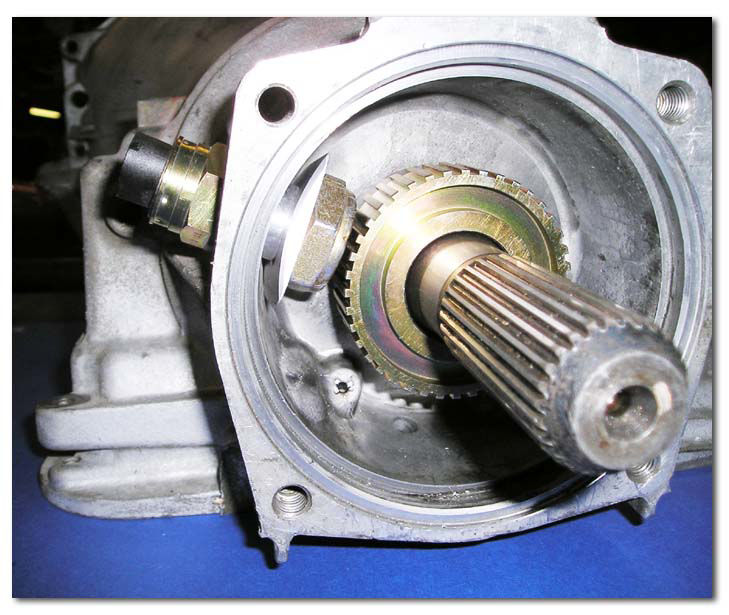
Typical OE style speed sender:

WIRING:
One wire is ground (keep the ground short for a good signal)
The other wire is the signal, this goes to the orange wire on the speedometer.
You cannot split the signal on 2-wire senders, if needed, a splitter may be required for cruise control.
Calibration is easy, we have a simple video here:
GPS SPEED SENDER 99010-04
Don't feel like messing around with all of that? No problem, our GPS speed sender has been out most popular accessory for over a decade! 1000s of them are on the road right now!


